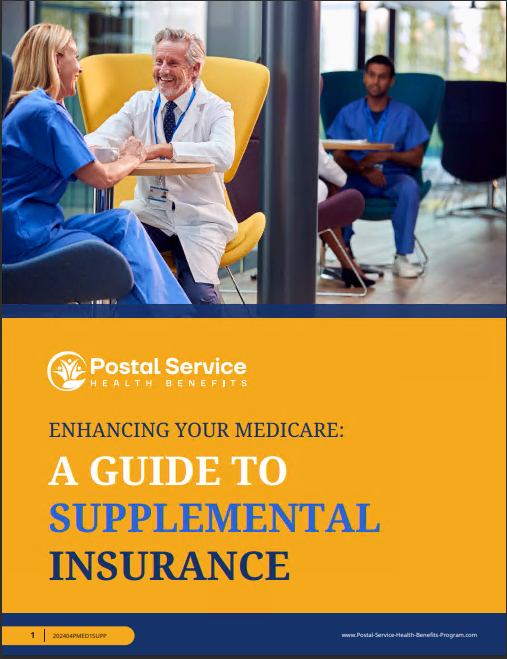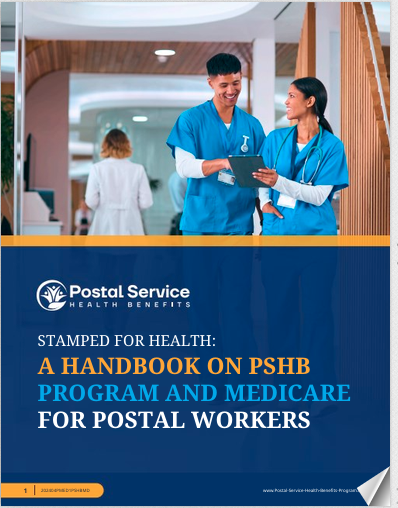Key Takeaways
-
Understanding how Medicare Part A works alongside the Postal Service Health Benefits (PSHB) program is crucial to avoid unexpected hospital expenses.
-
Coordinating your benefits effectively ensures you’re fully covered and can help reduce out-of-pocket costs for hospital stays.
Why Hospital Coverage Matters
Hospital stays can be one of the most expensive aspects of healthcare. Without the right coverage, a single hospital visit can leave you with hefty bills, from room charges to specialized care costs. If you’re part of the Postal Service Health Benefits (PSHB) program and eligible for Medicare, knowing how these two systems interact is essential. By taking the time to understand the big picture, you can avoid coverage gaps and make sure you’re protected for any hospital-related needs.
Medicare Part A: What It Covers and Costs
Medicare Part A, also known as hospital insurance, is designed to cover inpatient hospital stays, skilled nursing facility care, hospice care, and some home health services. If you or your spouse have worked and paid Medicare taxes for at least 10 years (40 quarters), you likely qualify for premium-free Part A. If not, you can still purchase it, but the cost depends on your work history.
Here are the key costs for Medicare Part A in 2025:
-
Deductible: $1,676 per benefit period. This is the amount you pay out-of-pocket before Medicare begins covering costs.
-
Coinsurance: After the deductible is met, you’ll pay $0 for the first 60 days of hospitalization. From day 61-90, the daily coinsurance is $419. For lifetime reserve days, it increases to $838 per day.
-
Skilled Nursing Facility Coinsurance: $0 for the first 20 days, then $209.50 per day for days 21-100.
These figures can quickly add up if you’re hospitalized for an extended period, which is why coordinating Medicare with PSHB is so important.
How PSHB Complements Medicare Part A
The Postal Service Health Benefits program is tailored to meet the unique needs of postal workers and retirees. If you’re eligible for Medicare, your PSHB plan often acts as secondary coverage to Medicare Part A. This means that once Medicare pays its share, your PSHB plan may cover additional costs, such as deductibles and coinsurance.
Here’s how the coordination works:
-
Primary and Secondary Coverage: Medicare Part A typically pays first for hospital-related expenses. After that, your PSHB plan may cover what Medicare doesn’t, significantly reducing your out-of-pocket costs.
-
Prescription Drug Coverage: For Medicare-eligible individuals enrolled in PSHB, prescription drug benefits are often provided through an integrated Part D plan, which can include additional savings.
-
Extra Benefits: Many PSHB plans offer additional benefits, such as reduced copayments or waived deductibles when you’re enrolled in both Medicare and PSHB.
Avoiding Coverage Gaps
To ensure you’re fully covered for hospital stays, it’s essential to understand potential gaps in coverage and how to address them. Here are a few tips to keep in mind:
-
Enroll in Medicare on Time: Missing your Initial Enrollment Period (IEP) for Medicare can lead to penalties and gaps in coverage. The IEP lasts for seven months—three months before your 65th birthday, the month of your birthday, and three months after.
-
Review PSHB Plan Options: Not all PSHB plans are the same. Some plans work better as secondary coverage to Medicare, offering lower out-of-pocket costs for hospital stays.
-
Understand Out-of-Network Costs: If you’re treated at a hospital that’s out of network for your PSHB plan, you could face higher costs. Always check whether a facility is in-network before receiving care.
Coordinating Medicare and PSHB for Maximum Savings
To make the most of your coverage, consider these strategies:
-
Maximize Your Medicare Enrollment: Enroll in both Medicare Part A and Part B if required by your PSHB plan. While Part A covers hospital stays, Part B covers outpatient services, which are also essential.
-
Use PSHB Member Resources: PSHB plans often provide tools and resources to help you find in-network hospitals and estimate costs. Take advantage of these services to plan ahead.
-
Leverage Preventive Care: Many hospital stays can be avoided through regular checkups and screenings, which are often covered in full by Medicare and PSHB. Staying proactive with your health reduces the likelihood of expensive hospital visits.
-
Understand Benefit Periods: Medicare Part A benefits are calculated based on benefit periods, not calendar years. A new benefit period begins 60 days after you’ve been discharged from a hospital or skilled nursing facility. Knowing this timeline helps you predict costs if multiple hospital stays occur within a short timeframe.
Key Deadlines and Enrollment Periods
Staying on top of enrollment periods ensures you’re not left without coverage:
-
Initial Enrollment Period (IEP): As mentioned, this is the seven-month window around your 65th birthday.
-
General Enrollment Period (GEP): If you miss your IEP, you can enroll in Medicare during the GEP from January 1 to March 31, but coverage won’t start until July 1, and late penalties may apply.
-
PSHB Open Season: The PSHB Open Season runs from November 11 to December 13 each year. This is the time to review and change your plan if needed.
Making the Most of Preventive Services
Both Medicare and PSHB encourage the use of preventive services to help you stay healthy. These services often include:
-
Annual wellness visits
-
Screenings for conditions like diabetes, cancer, and heart disease
-
Vaccinations, including flu and pneumonia shots
Using these services can help catch potential health issues early, reducing the likelihood of hospitalization and minimizing costs in the long run.
What Happens If You’re Not Eligible for Medicare?
If you’re not eligible for premium-free Medicare Part A, your PSHB plan will likely provide comprehensive coverage as your primary insurance. However, you may face higher out-of-pocket costs compared to having both Medicare and PSHB. If you’re considering purchasing Part A, weigh the costs against the potential savings it offers when combined with PSHB.
Planning for the Future
Healthcare needs change over time, so it’s important to reassess your coverage regularly. As you age, the likelihood of hospital stays increases, making comprehensive coverage even more critical. Stay informed about updates to Medicare and PSHB policies, as these can affect your coverage and costs.
Additionally, keep an eye on your Annual Notice of Change (ANOC) from your PSHB plan, which outlines any changes in benefits, premiums, or network providers. This helps you stay ahead of potential adjustments that could impact your hospital coverage.
Your Health, Fully Covered
Taking the time to understand how Medicare Part A and PSHB work together can save you from financial surprises during hospital stays. By coordinating these benefits, you’ll have peace of mind knowing you’re fully covered. Stay proactive with your health, review your coverage options annually, and use preventive services to reduce the need for hospitalization altogether.







